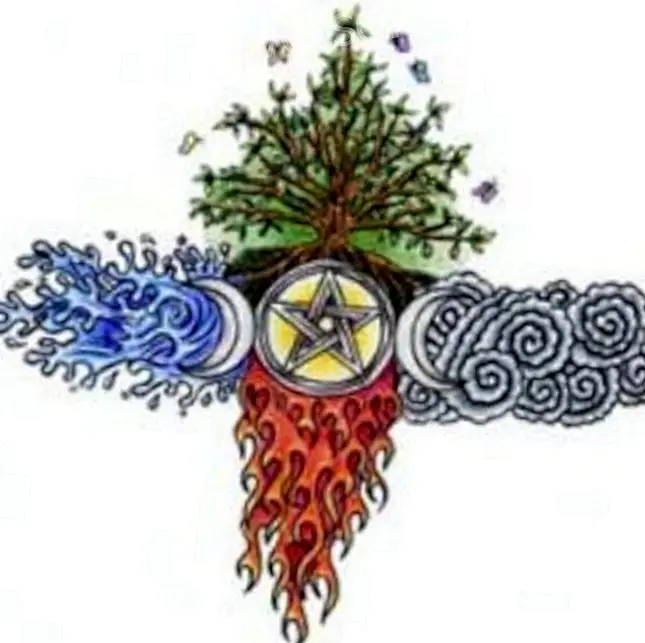
By: Lorena Lacaille
What are mantras?
Literally the term "mantra" means "liberating the mind"; Is it formed by mana ? ('mind') and tr? iate ('liberation'). It is used primarily to designate the formulas in verse and prose that are pronounced during liturgical ceremonies. That is to say, these are brief words or phrases in Sanskrit language that have an extraordinary vibratory power, which provokes in those who practice them: improvement in their health and spiritual evolution. Mantras are not prayers or prayers, but rather sounds to calm the mind, giving rise to what is known as "contemplative experience, " where the person rests at the center of his being.
It is worth mentioning that, mantras are repeated a certain number of times with a specific objective, and because of the rhythm and vibration they produce, they have the power to focus the mind and motivate changes. As we repeat and concentrate on the mantra, our mind does not have nor will it have space or time for other thoughts and therefore, we will be able to relax and meditate much more deeply.
The principle of a mantra is the basic concept that sound is vibration and that all vibration in turn generates energy and therefore has the ability to generate change in the field where it is introduced. Mantras can be repeated aloud or mentally and are often used together with mandalas, mudras and other meditation tools.
The relationship between sound and mantras
“The sound by which all things are created is not just any sound. It is the word of God. Hindu, Buddhist, Jewish and Christian mystics believe that word creates and permeates everything that exists. The palaba is the most powerful creative force in the universe. And there is a way in which we can harness that force. The mystics of East and West have connected with the power of creation through the repetition of spoken mantras and the names of God. ” Elizabeth Clare Prophet This means that through the mantras we generate forces and energies capable of creating (with the help of visualization) or destroying. And its use is more frequent than we think: prayers are said, sung and sung in churches, temples and mosques throughout the world. For example: Christians pray our Father out loud in the churches. The Jews recite the Shema in the synagogues.
How to recite the mantras?
To get hold of the mantras we don't need to mount a solemn ceremony. In fact, using mantras as an instrument of relaxation and meditation is quite easy. Simply repeating a mantra (out loud or in the mind), at any time you need it, makes it effective. You can be on the bus, at a work meeting or while walking, etc. In short, you can occupy them in any situation where you need to clear your mind of worries, problems or negative thoughts, or also to invoke the solution to a problem.
I recommend the following exercise to start
- Sit in a place where you will not be interrupted for at least half an hour.
- Choose the mantra of your choice or start with an Om. (Below I will give you a list of mantras and their purposes).
- Identify the intention of meditation and the use of the mantra.
Follow the steps below to meditate:
- Focus on your breathing for 5 minutes, following the natural rhythm of the body.
- Then, he begins to vocalize the mantra, taking a slow breath and pronouncing the sound when exhaling, prolonging it as much as possible. Do not force it. Repeat at your own pace, trying not to leave moments of silence between one mantra and the next.
- Follow the natural rhythm of your breath without running out of breath. When you feel that the transition is natural and effortless, lower your voice until the chanting of the mantra is internal.
- Let the internal song also decrease in volume until you find silence.
- And enjoy this silence for as long as you want, you decide when to stop.
Note: To create a state of relaxation and calm, we can use slower rhythms, while if we need to energize ourselves, we can recite the mantra at a faster rate.
Now I share a list of mantras of which you can serve in your meditations and according to the need you have, look for the one that can serve you.
- OM MANI PADME HUM (Mantra to harmonize the fields and lighting)
- OM MANE PADME HUM HRIOM BABAGI AH HUM (Mantra for enlightenment, wisdom, love and detachment)
OM YAMANTAKA HUM PHAT (Mantra eliminates negative mental patterns)
OM HRIM GAURYAI NAMAH (Mantra to develop in all areas)
OM SRI GOVINDAYA NAMAH (Mantra for happiness and wealth)
OM AH RA PA TSA NA DHIOM TARE TUTTARE TURE SVAHAOM VAJRASATTVA HUMOM AH HUM (Mantra for yoga initiation)
OM DHUPE AH HUM (Mantra to offer incense)
OM KALI AH HUM (Mantra greeting to divinity)
OM WAGI SHORI MUMOM AIM HRIM SRIM KLIM SOU HU OM (crown chakra mantra)
OM KRIM NAMAHA (mantra chakra eyes)
OM SO HU NAMAHA (Mantra chakra throat)
OM AIM HRIM KLIM CHAMUNDAYE VICHE (Mantra chakra heart)
OM SRIM NAMAHA (Mantra chakra plexus)
OM HRIM NAMAHA (Mantra chakra soul)
OM AIM NAMAHA (Mantra chakra base)
OM SANAT KUMARA AH HUM (Mantra for strength and courage)
OM CHANDRAYA NAMAH (Mantra for tranquility, clarity and reasoning)
OM TARE TUTARE TURE SOHA (Mantra Tara, which contains the 21 Tara mantras, harmony, peace, love, prosperity, cure, protection, etc.)
OM TARE TUTARE TURE DZAMBEH MOHEH DANA METI SHRI SOHA (Tara Mantra for Prosperity)
OM BEMA TARE SENDARA HRI SARVA LOKA WASHUM KURU HO (Tara mantra for evolution)
OM TARE TUTARE TURE SARVA ATA SIDDHI SHIDDHI KURU SOHA - (Tara Mantra for orders)
OM VAJRASATTVA HUM (Mantra to purify and empty the mind)
OM SRI GANESHAYA NAMAH (Mantra for protection, prosperity, unobstruction and any order)
OM SRI KALIKAYA NAMAH (Transforming mantra: karma and self limitations)
OM NAMAH SHIVAYA (Transforming mantra: karma and self limitations)
OM SRI MAHALAKSHMYAI NAMAH (Mantra for prosperity)
OM SRI SARASWATTI NAMAH (Mantra to ask for enlightenment and intellectual development)
OM NARAYANAYA VIDMAHE VASUDEVAYA DHI MAHI TANNO VISHNU? PRACHODAYA (Mantra to provide strength, growth, well being spiritual, physical, mental and emotional.
OM HRIM BRAHMAYA NAMAH (Mantra to raise the mood, for happiness)
OM KLIM KRISHNAYA NAMAH (Mantra to give us peace, courage and power)
AUM SOM SOMAYE NAMAH AUM (Mantra to control our psyche, transmute solar energy into visual, magnetic and protective energy)
- OM BHUR BHUWAH SWAHTAT SAVITUR VARENYAMBHARGO DEVASYA DHIMAHIDHIYO YO NAH PRACHODAYATAUM BRING HANSAH SURYAYE NAMAH AUM (Mantra for purification, illumination, prosperity and revitalizing)
- HÃMURÃBI ÕM SHIKTË SANSALA PHRÃSHIVATA. (Mantra to get victory)
- OH HA HUM VAJRA GURU PADME SIDDHI HUMOH AH MA RA NI JI VAN TI YE SVAHAPÍLAYATI GRHA ARI OM. (Mantra to protect the house from enemies)
- PÍLAYATI GRHASTHA ARI OM. (Mantra to protect the owner of the house from enemies)
? GATE GATE PARAGATE PARASANGATE BODHI SVAHATATYATA OM MUNI MUNI MAHA MUNI SHAKYAMUNIYE SVAHARAM YAM KAM (Mantra to balance the energies of the environment)
- ALMANAH MARE ÃLBEHA AREHAIL (Mantra for protection)
I AM WHO I AM: This version in our language also tends to unite the individual with the universal.
OM KLIM CRISTAVE NAMA HA: It means "in the name of everything that my critical presence comes to me."
The physiological effects of mantras
With the repetition of the different mantras the power will be manifested more and more, the mental and physical obstacles will begin to fade gradually. Since mantras invigorate the mind and produce new energy.
Among the benefits they produce in our body include the following:
- Relief from stress and anxiety
- Improvement of concentration
- Stimulates creativity
- Vision improvement (physical, mental and spiritual)
- The cerebral hemispheres are balanced
- Relief of sinusitis and headaches
- Stimulate the activity of alpha waves or deep meditation
- Balance and clean our chakras and aura
- They facilitate access to intuition and our higher consciousness.
Note: In Hindu and Buddhist ceremonies, you often work with bad things that are accessories similar to a rosary, which have 108 balls (sometimes 21) to recite the chosen mantra this number of times. Many of those who practice with mantras disciplinedly follow this tradition and work with bad times in their meditation, usually in the morning and afternoon. It is common to find the practice of mantras in cycles of 3 or multiples of 3, up to 108.
Hello, how are you, dear readers? This post is an excerpt from my next book that will be available in August. It is a book where you will find various information related to metaphysics, Buddhism and well-being in general. And I hope the information will be useful and apply in their lives.
- For suggestions and comments about my articles and the information you find on the blog (http://mundometafisico.wordpress.com/), write me at the following addresses and I will respond as soon as possible.
-
And you can also follow me on my Facebook, Twitter and Google+ accounts just look for me as Lorena Lacaille and voila!
Copyright
Metaphysical World is a Registered Trademark ® its use is illegal without the author's authorization constitutes a crime. All information disseminated on this Site is freely distributed as long as you respect the author's name and do not alter the information in the articles.
Mantras: magic-spiritual songs by Lorena Lacaille






